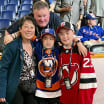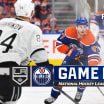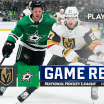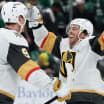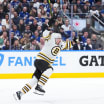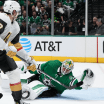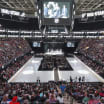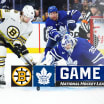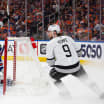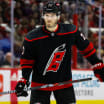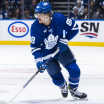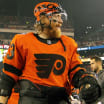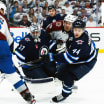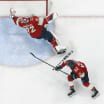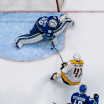TORONTO -- It was Nov. 5 when Toronto Maple Leafs center Nazem Kadri hit Vancouver Canucks forward Daniel Sedin. As Sedin was shooting the puck in the left circle, Kadri came up from behind to his right and blindsided him. Sedin's helmet popped off. His head hit the ice.
Kadri received a major for charging and a game misconduct. He did not receive supplemental discipline for an illegal check to the head, however, because the NHL Department of Player Safety determined through video review that the main point of contact was not Sedin's head.
No consensus from NHL GMs on blindside hits
Player safety major topic on Tuesday; discussions will continue at meeting in March
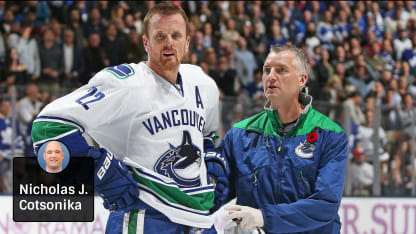
NHL general managers discussed the Kadri-Sedin hit specifically and blindside hits in general when they met Tuesday in Toronto.
"I think now with the speed of the game and the way players back pressure so hard, that we have to take a look at everything to make sure that player safety is first and foremost," Canucks GM Jim Benning said.
But the discussion took about 15 minutes of a five-hour meeting, and the GMs left without a consensus, let alone a recommendation of a rule change. They generally do not discuss topics in depth or recommend rule changes at their annual one-day meeting in November, reserving that for their annual three-day meeting in March.
If they discuss outlawing blindside hits in March, it won't be easy to rewrite a rule or write a new one. They would have to define a blindside hit, decide how the rule would be enforced and strike the right balance.
"I think this is the hardest area to work through because we all care about player safety," Philadelphia Flyers GM Ron Hextall said. "We want the players to be safe. We also don't want to take hitting out of the game. It's a sensitive area, and to me, there's got to be a lot of thought and a lot of video watching and a lot of opinions before you start to change things."
Together with the NHL Players' Association through the competition committee, the NHL has worked to reduce head trauma but has not instituted a total ban on head contact, allowing for the fact hits can have incidental head contact because of the nature of the game. Puck carriers bend over. Defenders stand up.
In March 2010, the NHL instituted Rule 48 (illegal check to the head), banning lateral or blindside hits when the head was targeted and/or the principal point of contact. Remember: Hit after hit, reasonable people with rich hockey backgrounds would argue whether it was lateral or blindside.
In June 2011, the competition committee adjusted Rule 48, removing the words "lateral" and "blindside." There would be no more arguments about whether a hit was lateral or blindside. What mattered was whether the head was targeted and/or the principal point of contact.
In September 2013, the competition committee adjusted Rule 48 again, removing the concept of targeting, replacing the word "principal" because people confused it with "first," and adding consideration of whether head contact was avoidable. It read: "A hit resulting in contact with an opponent's head where the head was the main point of contact and such contact to the head was avoidable is not permitted." What mattered was whether the head took the brunt of the blow, and if so, whether it could have been avoided.
Bottom line: Over the years, the rule has become broader, simpler and clearer. You cannot make the head the main point of contact from any direction if you can avoid it.
Kadri got a lot of Sedin's torso. He did not pick his head. Few hits like that have had the result this one did. If you outlaw hits like that, you might outlaw more than you intended and create more confusion and controversy.
Minnesota Wild GM Chuck Fletcher said he looked at video the other day and saw about 20 hits that could be labeled blindside that weren't as egregious or as physical as the Kadri-Sedin hit, "so it's just a little bit of a slippery slope."
"You could just say, 'Get rid of any hit that's not a north-south hit,'" Chicago Blackhawks GM Stan Bowman said. "But there's a lot of those in a game. You'd be surprised. Now, they're not all to the extreme level of the Sedin and Kadri incident. … I can't remember the last one that was like that. So it's not a real frequent event. So you should say, 'OK, then all the easier just to get rid of it.' But how would you word it then? What would your wording be?"
How would you define "blindside" clearly? Would you make the level of force a factor? How would you enforce it consistently?
Would it take too much hitting out of the game?
These are some of the things the GMs must consider between now and March.
"It's very difficult, because part of the blindside is checking when a guy's got the puck in a scoring position and you're backchecking," Hextall said. "So it's not one of those all-encompassing areas where you can say, 'OK, if a guy does this, then it's a blindside hit.' It's one of those things that it's got to go through a process. These meetings are not the time for it. Those are the March meetings. So I don't know if it's on the agenda [for March] or not.
"It's something we're all afraid of. None of us want to see it. On the other hand, if you just start labeling it just blindside, you're bringing a lot of hits in there that don't do any damage and are good hockey plays."

